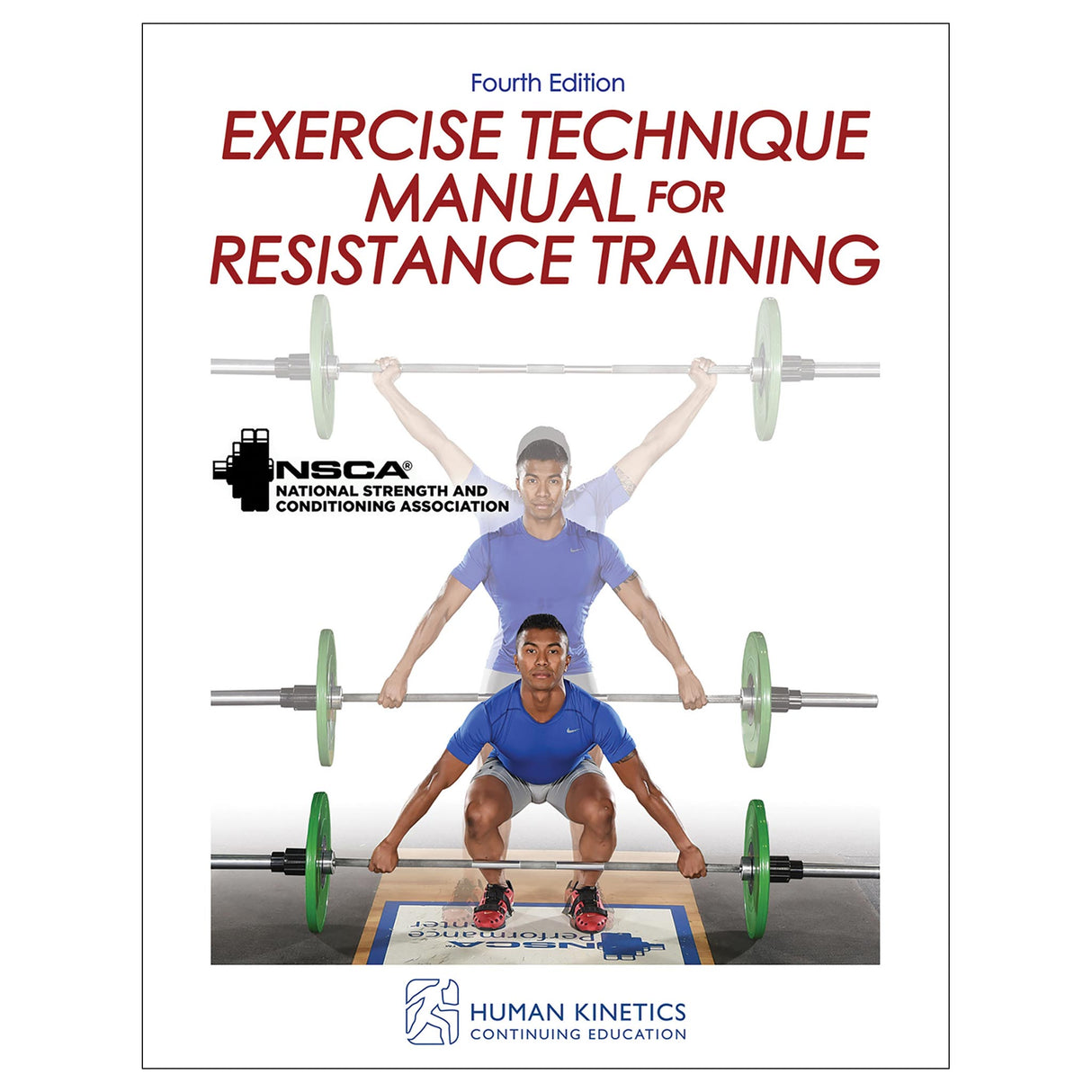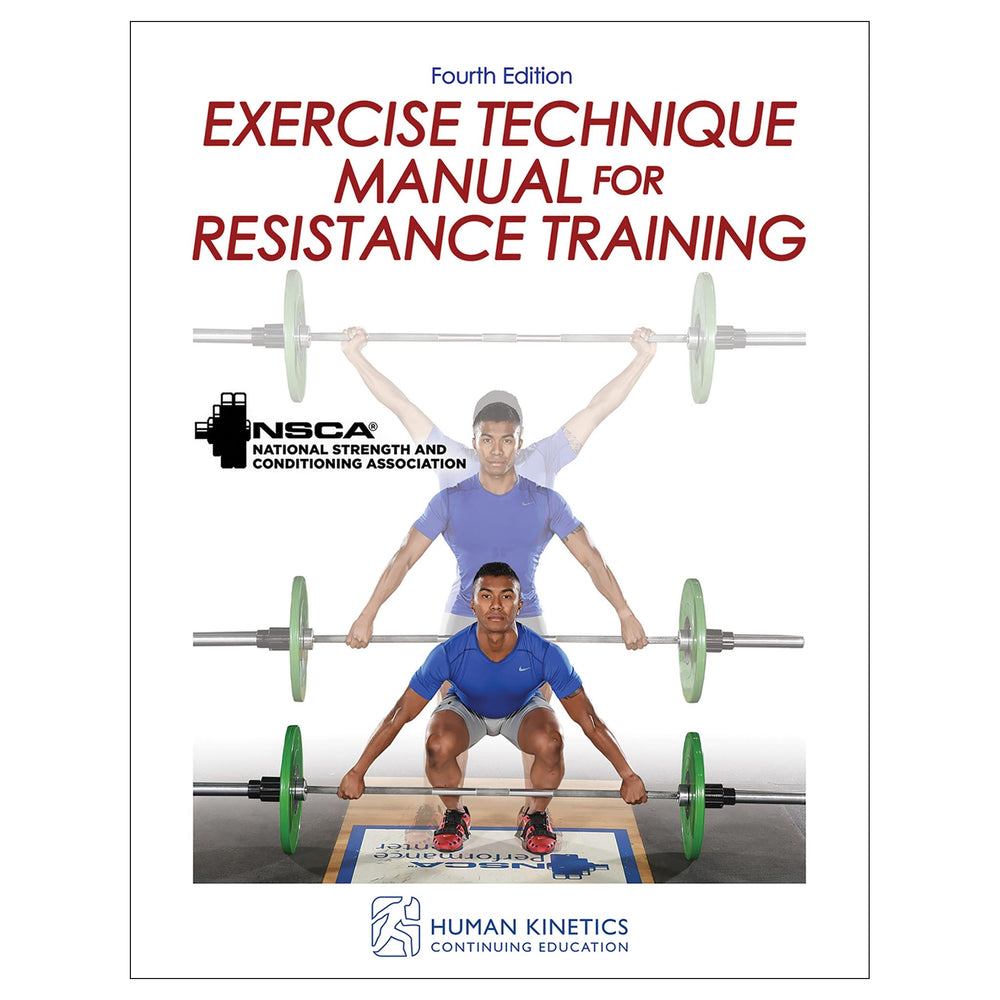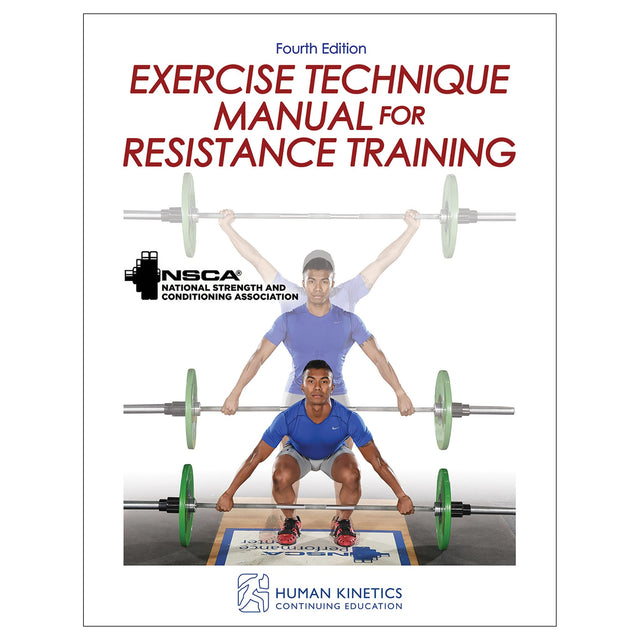Exercise Technique Manual for Resistance Training 4th Edition Online CE Course With Ebook
Author: Human Kinetics
$138.95 CAD
Human Kinetics strongly recommends that you complete your exam within the calendar year of your date of purchase to ensure approved credits do not expire for your organization.
- Exercise Technique Manual for Resistance Training, Fourth Edition, ebook
- Online video clips
- Online study guide
- Online continuing education exam
With unmatched visual demonstration of a variety of free weight and machine exercises, Exercise Technique Manual for Resistance Training, Fourth Edition Online CE Course, is a valuable tool for those preparing for an NSCA certification exam as well as those who are already certified. It is a practical resource for anyone who designs programs for athletes and clients of any age and fitness level. This course offers the most comprehensive collection of resistance training technique available. The revised fourth edition contains 100 total exercises, each with a step-by-step checklist that teaches safe and effective exercise technique, and two or more full-color photos of each resistance training exercise that distinctly show correct technique.
The course is organized by body region, covering total body, lower body, upper body, and anatomical core exercises. A variety of exercises, including those using alternative modes and nontraditional implements, are highlighted. Tables describe each exercise’s concentric action, predominant muscle groups, and muscles involved, enabling learners to understand the impact of the exercises on each body region. Accompanying checklists identify the correct grip, stance, body position, and range of motion for each exercise. Online videos demonstrate proper technique as well as common errors so that users can recognize incorrect techniques and make appropriate adjustments.
The study guide includes learning activities, along with an answer key, to help you prepare for the course exam. Once you complete the course and pass the exam, you can print a certificate for continuing education credits.
Learning Objectives
After completing this course, you will be able to do the following:
- Explain spotting techniques for various resistance training exercises.
- Describe breathing guidelines and demonstrate proper breathing during resistance training.
- Describe various training exercise modes.
- Organize resistance training exercises into categories.
- Analyze resistance training exercise technique through video.
- Recognize improper resistance training exercise technique.
- Manipulate resistance training exercise technique to improve safety and effectiveness.
- Explain proper resistance training exercise technique.
- Determine proper grip type and grip width.
- Describe the concentric actions that occur during resistance training.
- Identify the predominant muscle groups, body areas, and muscles involved during resistance training.
Audience
Audiences: Strength and conditioning professionals, personal trainers, athletic trainers, and health and fitness instructors.Power and Explosive Exercises
1.1 Power Snatch
1.2 Power Snatch From Blocks
1.3 Hang Power Snatch
1.4 One-Arm Dumbbell Snatch
1.5 Muscle Snatch
1.6 Power Clean
1.7 Hang Power Clean
1.8 Dumbbell Hang Power Clean
1.9 Push Press
1.10 Dumbbell Hang Power Clean to Push Press
1.11 Push Jerk
1.12 Split Jerk
Part II. Lower Body
Hip and Thigh (Multijoint) Exercises
2.1 Front Squat
2.2 Back Squat
2.3 Romanian Deadlift (RDL)
2.4 Deadlift
2.5 Hip Sled (Machine)
2.6 Seated Leg Press (Machine)
2.7 Step-Up
2.8 Forward Step Lunge
2.9 Glute Ham Raise
2.10 Barbell Hip Thrust
2.11 Single-Leg Dumbbell Hip Thrust
2.12 Single-Leg (Pistol) Squat
Hip and Thigh (Single-Joint) Exercises
2.13 Nordic Hamstring Curl
2.14 Stiff-Leg Deadlift
2.15 Good Morning
2.16 Leg (Knee) Extension (Machine)
2.17 Seated Leg (Knee) Curl (Machine)
2.18 Lying Leg (Knee) Curl (Machine)
Calf (Single-Joint) Exercises
2.19 Seated Calf (Heel) Raise (Machine)
2.20 Standing Calf (Heel) Raise (Machine)
Part III. Upper Body
Chest (Multijoint) Exercises
3.1 Flat Barbell Bench Press
3.2 Incline Barbell Bench Press
3.3 Decline Barbell Bench Press
3.4 Flat Dumbbell Bench Press
3.5 Incline Dumbbell Bench Press
3.6 Decline Dumbbell Bench Press
3.7 Vertical Chest Press (Machine)
Chest (Single-Joint) Exercises
3.8 Pec Deck (Machine)
3.9 Flat Dumbbell Fly
3.10 Incline Dumbbell Fly
3.11 Decline Dumbbell Fly
3.12 Cable Crossover (Machine)
Back (Multijoint) Exercises
3.13 Lat Pulldown (Machine)
3.14 Bent-Over Row
3.15 One-Arm Dumbbell Row
3.16 Low-Pulley Seated Row (Machine)
3.17 Seated Row (Machine)
3.18 Face Pull (Machine)
Back (Single-Joint) Exercises
3.19 Barbell Pull-Over
3.20 Dumbbell Pull-Over
3.21 Straight-Arm Lat Pulldown (Machine)
Shoulder (Multijoint) Exercises
3.22 Shoulder Press (Machine)
3.23 Seated Barbell Shoulder Press
3.24 Seated Dumbbell Shoulder Press
3.25 Upright Row
Shoulder (Single-Joint) Exercises
3.26 Lateral Shoulder Raise
3.27 Bent-Over Lateral Raise
3.28 Front Shoulder Raise
3.29 Prone T’s, Y’s, and I’s
Biceps (Single-Joint) Exercises
3.30 Barbell Biceps Curl
3.31 EZ-Bar Biceps Curl
3.32 Hammer Curl
3.33 Dumbbell Alternating Curl
Triceps (Single-Joint) Exercises
3.34 Lying Barbell Triceps Extension
3.35 Triceps Pushdown (Machine)
3.36 Overhead Triceps Extension
Forearm (Single-Joint) Exercises
3.37 Wrist Curl
3.38 Wrist Extension
3.39 Reverse Curl
Part IV. Anatomical Core
Anatomical Core Exercises
4.1 Curl-Up
4.2 Abdominal Crunch
4.3 Front Plank
4.4 Side Plank
4.5 Stability Ball Pike
4.6 Stability Ball Jackknife
4.7 Abdominal Crunch (Machine)
4.8 Stability Ball Abdominal Crunch
4.9 Stability Ball Reverse Back Extension
4.10 Stability Ball Rollout
4.11 Roman Chair Back Extension
4.12 Pallof Press (Machine)
4.13 Woodchop (Machine)
4.14 Russian Twist
Part V. Alternative Modes and Nontraditional Implements
Exercises Using Alternative Modes and Nontraditional Implements
5.1 Two-Arm Kettlebell Swing
5.2 Bulgarian Squat
5.3 Single-Leg Kettlebell Romanian Deadlift
5.4 Turkish Get-Up
5.5 One-Arm Kettlebell Clean
5.6 One-Arm Kettlebell Press
5.7 Kettlebell Front Squat
5.8 Stability Ball Bridge to Curl
5.9 Dumbbell Renegade Row
5.10 Landmine Shoulder Press
5.11 Landmine Row
5.12 Sled Push
5.13 Medicine Ball or Slam Ball Slam





